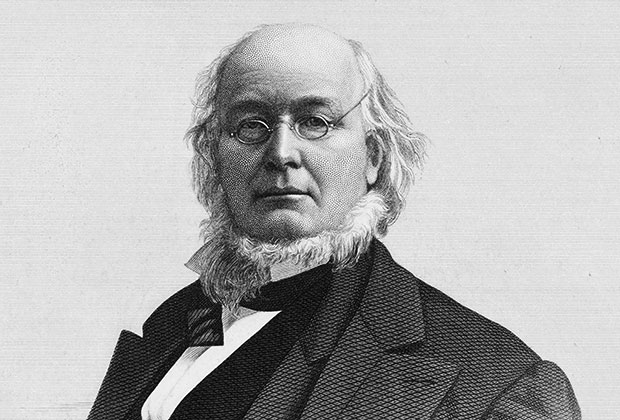
A critic said to James McNeill Whistler, “Your picture is not up to your mark; it is not good this time.”
Whistler said, “You should not say it isn’t good; you should say you don’t like it, and then, you know, you’re perfectly safe.”

A critic said to James McNeill Whistler, “Your picture is not up to your mark; it is not good this time.”
Whistler said, “You should not say it isn’t good; you should say you don’t like it, and then, you know, you’re perfectly safe.”

The color fuchsia is named after the flower of that name, which was named after 16th-century German botanist Leonhart Fuchs. And Fuchs is German for fox. So the color is named after a plant named after a man named after an animal.
The color orange is named after the fruit, rather than the other way around.
Canaries are named after the Canary Islands, rather than the other way around.
04/20/2024 UPDATE: The Canary Islands in turn derive their name from the Latin name Canariae Insulae, “islands of the dogs.” Pliny the Elder records that the islands contained “vast multitudes of dogs of very large size.” So animal -> islands -> bird. (Thanks, Bob, Randy, Derek, and Sam.)
And chartreuse is named after the French liqueur of that color, which is named after the Grand Chartreuse order of monks that created it in the eponymous Chartreuse Mountains. Mountains -> monastery -> beverage -> color. (Thanks, John.)

The word curfew derives from the Old French phrase couvre-feu, which means “cover fire.” Under a law imposed by William the Conqueror, all lights and fires had to be covered by 8 p.m. to reduce the risk of conflagration in towns still built largely of timber.
The practice spread through medieval Europe. Writes historian Roger Ekirch, “Not only were streets swept of pedestrians, but homes still aglow after the curfew bell ran afoul of authorities. Besides incurring fines, offenders faced the risk of incarceration, especially if caught outdoors.”
(At Day’s Close: Night in Times Past, 2006.)
New Mexico’s state senate took up a startling amendment in 1995 — it would have required psychologists to dress up as wizards when providing expert testimony on a defendant’s competency:
When a psychologist or psychiatrist testifies during a defendant’s competency hearing, the psychologist or psychiatrist shall wear a cone-shaped hat that is not less than two feet tall. The surface of the hat shall be imprinted with stars and lightning bolts. Additionally, a psychologist or psychiatrist shall be required to don a white beard that is not less than 18 inches in length and shall punctuate crucial elements of his testimony by stabbing the air with a wand. Whenever a psychologist or psychiatrist provides expert testimony regarding a defendant’s competency, the bailiff shall contemporaneously dim the courtroom lights and administer two strikes to a Chinese gong.
The measure had received unanimous approval in the senate and was headed for the house of representatives when sponsor Duncan Scott explained that he’d intended it as satire — he felt that too many mental health practitioners had been acting as expert witnesses. It was withdrawn and never signed into law.
From reader Hans Havermann: Each of these equations uses each of the digits 0-9 exactly once:
8596 = 2×14×307
8790 = 2×3×1465
9360 = 2×4×15×78
9380 = 2×5×14×67
9870 = 2×3×1645
10752 = 3×4×896
12780 = 4×5×639
14760 = 5×9×328
14820 = 5×39×76
15628 = 4×3907
15678 = 39×402
16038 = 27×594 (= 54×297)
16704 = 9×32×58
17082 = 3×5694
17820 = 36×495 (= 45×396)
17920 = 8×35×64
18720 = 4×5×936
19084 = 52×367
19240 = 8×37×65
20457 = 3×6819
20574 = 6×9×381
20754 = 3×6918
21658 = 7×3094
24056 = 8×31×97
24507 = 3×8169
25803 = 9×47×61
26180 = 4×7×935
26910 = 78×345
27504 = 3×9168
28156 = 4×7039
28651 = 7×4093
30296 = 7×8×541
30576 = 8×42×91
30752 = 4×8×961
31920 = 5×76×84
32760 = 8×45×91
32890 = 46×715
34902 = 6×5817
36508 = 4×9127
47320 = 8×65×91
58401 = 63×927
65128 = 7×9304
65821 = 7×9403
(Thanks, Hans.)
That wise philosopher, William J. Boardman, tells me that those first threatening aggressive noises [man’s first swearing] were full of G’s and K’s and P’s and H’s and harsh sibilants. Such noises had the effect of a blow; they needed no dictionary to prove they were primed with all the bad magic of an evil wish. …
If I am to take seriously Mr. Boardman’s assertion that only a certain five letters have objurgatory value, then why not make words out of them and consider them as much our own private property as ‘jobjam’ belonged to Booth Tarkington, or ‘Malaga!’ to Dumas? Try ‘Bodkogh!’ for instance, or ‘Hagbadek!’ ‘Khigbod!’ ‘Dakadigbeg!’ or ‘Godbekho!’
— Burges Johnson, The Lost Art of Profanity, 1948

Another example of Horace Greeley’s terrible handwriting: According to biographer Lurton Dunham Ingersoll, in 1870 the town of Sandwich, Illinois, invited Greeley to address its lecture association. He responded:
Dear Sir. — I am overworked and growing old. I shall be 60 next Feb. 3. On the whole, it seems I must decline to lecture henceforth, except in this immediate vicinity, if I do at all. I cannot promise to visit Illinois on that errand — certainly not now.
The town replied:
Dear Sir. — Your acceptance to lecture before our association next winter came to hand this morning. Your penmanship not being the plainest, it took some time to translate it; but we succeeded; and would say your time ‘3d of February,’ and terms ‘$60,’ are entirely satisfactory.
They added, “As you suggest, we may be able to get you other engagements in this immediate vicinity; if so, we will advise you.”

An old puzzle by Paul Hoffman from Science Digest. Dr. Crypton is playing chess with his boss. Crypton has the white pieces. What move can he play that will not checkmate Black? There’s no funny business; the problem is just what it seems, except that Crypton has promised never to put a knight on any square adjacent to the black king, so 1. Ne6 doesn’t count as a solution.
When Joseph Addison lent a sum of money to his friend Temple Stanyan, Stanyan became meekly agreeable, unwilling to argue with Addison as he used to.
At last Addison told him, “Sir, either contradict me or pay me my money.”
Biographer Peter Smithers calls this “a salvo of which Johnson himself might have been proud.”